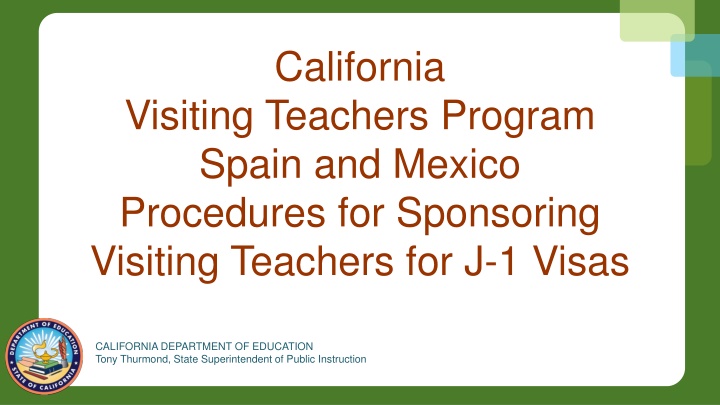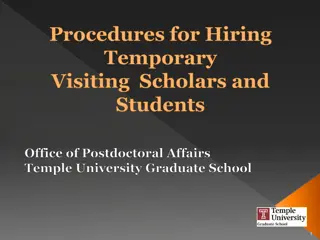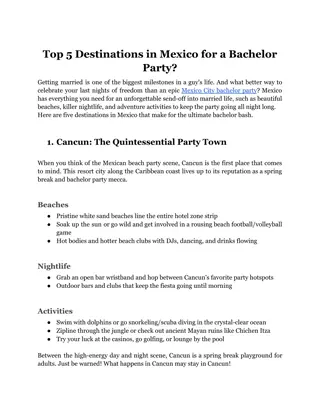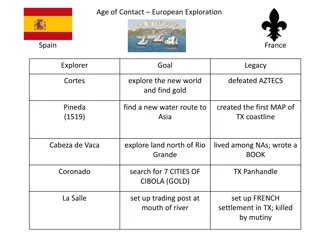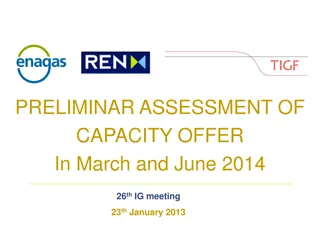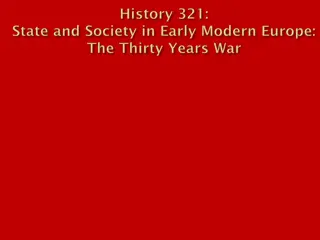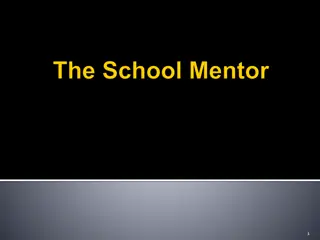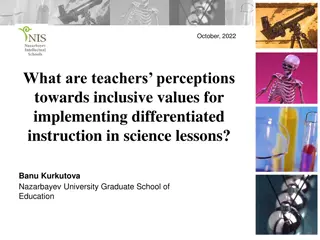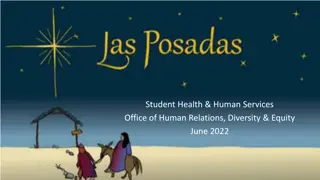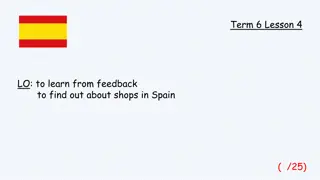California Visiting Teachers Program Procedures in Spain and Mexico
The California Department of Education's Visiting Teachers Program facilitates collaboration with consulates and education ministries in Spain and Mexico to sponsor visiting teachers for J-1 visas. The program aims to enhance mutual understanding through educational exchanges and cultural immersion. Responsibilities, requirements, and selection procedures are outlined to ensure successful teacher placements in local educational agencies.
Download Presentation

Please find below an Image/Link to download the presentation.
The content on the website is provided AS IS for your information and personal use only. It may not be sold, licensed, or shared on other websites without obtaining consent from the author.If you encounter any issues during the download, it is possible that the publisher has removed the file from their server.
You are allowed to download the files provided on this website for personal or commercial use, subject to the condition that they are used lawfully. All files are the property of their respective owners.
The content on the website is provided AS IS for your information and personal use only. It may not be sold, licensed, or shared on other websites without obtaining consent from the author.
E N D
Presentation Transcript
California Visiting Teachers Program Spain and Mexico Procedures for Sponsoring Visiting Teachers for J-1 Visas CALIFORNIA DEPARTMENT OF EDUCATION Tony Thurmond, State Superintendent of Public Instruction
Objectives Background of the U.S. Department of State s Exchange Visitor Program (EVP) Collaboration with Consulates and Secretaria de Educacion Publica (SEP) in Mexico and the Ministerio de Educaci n y Formaci n Profesional from Spain Agreements of Collaboration California Department of Education (CDE) Responsibilities Local Educational Agency (LEA) Responsibilities Credentialing Requirements Selection Procedures
Background on Visiting Teachers Program (1) Code of Federal Regulations Title 22 (22 CFR) Section 62 Mutual Educational and Cultural Exchange Act of 1961, as amended The purpose of the Act is to increase mutual understanding between the people of the United States and the people of other countries by means of educational and cultural exchanges. All Exchange Visitors are registered in the Student and Exchange Visitor Information System. J-1 Visa website: https://j1visa.state.gov/
Background on Visiting Teachers Program (2) CDE Program Designation U.S. Department of State Exchange Coordination and Designation Active Memoranda of Understanding: Spain and Mexico Program Duration Teachers may stay up to three years, with the possibility of extending for an additional two years.
Collaboration with Consulates and Ministry of Education M xico: Secretary of Public Education and Mexican Consulates in California Spain: Ministry of Education through the Education Office of the Embassy of Spain in the United States
Agreement of Collaboration Purpose Review Due Date Submission
Sponsor/California Department of Education Responsibilities (1) The CDE as the Designated Sponsor: Assures LEA compliance with regulations per 22 CFR Section 62. Ensures teachers understand all program requirements, expenses, and possible expenses. Conducts official communications with the U.S. Department of State and Homeland Security. Conducts assessments to select teachers for LEA interviews. Prepares DS-2019 form for J-1 non-immigrant status Teachers arrive in late July.
Sponsor/California Department of Education Responsibilities (2) Validates entrance and provides teachers orientation. Monitors visiting teachers in collaboration with LEAs. Assists both teachers and districts in complying with all credential requirements and initial Letter of Eligibility. Assists LEAs with teachers salary placement; early August salary evaluation from CDE. Ensures teachers complete annual cross-cultural activity (see document). Assists teachers and districts with fourth- and fifth-year extension applications to the U.S. Department of State. Assists teachers at program exit.
Local Educational Agency Responsibilities (1) Interview and select teachers. Offer employment contract. Place teachers in English Language Development positions, bilingual settings and/or Spanish as a foreign language courses. English only instruction assignments not accepted. Involve school community and interested parties in the decision to hire visiting teachers. Communicate with teachers before arrival. Assist teachers with arrival to the United States, housing, transportation, Social Security, and Department of Motor Vehicles.
Local Educational Agency Responsibilities (2) Ensure proper teacher onboarding to the LEA- preliminary contract while waiting for salary evaluation. Inform principals about the program. Ensure ongoing communication through check-in with teachers and CDE. Updates (placement, principal, etc.). Issues (in or out of school). Monitoring (meeting location, schedules, etc.).
Local Educational Agency Responsibilities (3) Provide extensive orientation regarding: Instructional program and classroom management Expectations Evaluation process, timeline, and requirements Credentialing application, fingerprinting, induction Life and customs in the United States Local community resources Other aspects to facilitate adjustment to work and life in the United States State Teacher Retirement System exemption per California Education Code Section 22601: https://leginfo.legislature.ca.gov/faces/codes_displayText.xhtml?lawCode=EDC&division= 1.&title=1.&part=13.&chapter=11.&article= Medicare and Social Security Tax Information: https://www.irs.gov/individuals/international-taxpayers/alien-liability-for-social-security-and- medicare-taxes-of-foreign-teachers-foreign-researchers-and-other-foreign-professionals
Best Practices for a Successful Program LEAs should ensure personnel at the district and school site have the capacity and cultural sensitivity to provide excellent customer service throughout the process of: Providing background information on the school. Welcoming and supporting teachers to find housing, establish bank accounts, and assigning a mentor teacher that can answer questions about the campus and culture. Training and assigning one credential analyst to help ensure the teacher is on track to completing the credentialing process at the end of the three years.
Application to Participate in the Visiting Teacher Program Access the CDE Visiting Teacher Program web page to access the online LEA application, as well as the application due date. The web page will be provided at the end of this recording.
Sponsor/California Department of Education Priorities LEAs with a high number of vacant bilingual teachers. LEAs with high percentages of English learner students. LEAs ability to provide outstanding support to visiting teacher(s), as evidenced by the commitments made in the application or by previous visiting teacher experiences in the LEA.
For More Information CDE s Exchange Visitor Program for Teachers web page https://www.cde.ca.gov/sp/me/il/exchangevisit.asp Responsible Officer and Alternate Responsible Officers Professional Learning Support Division VTP@cde.ca.gov
